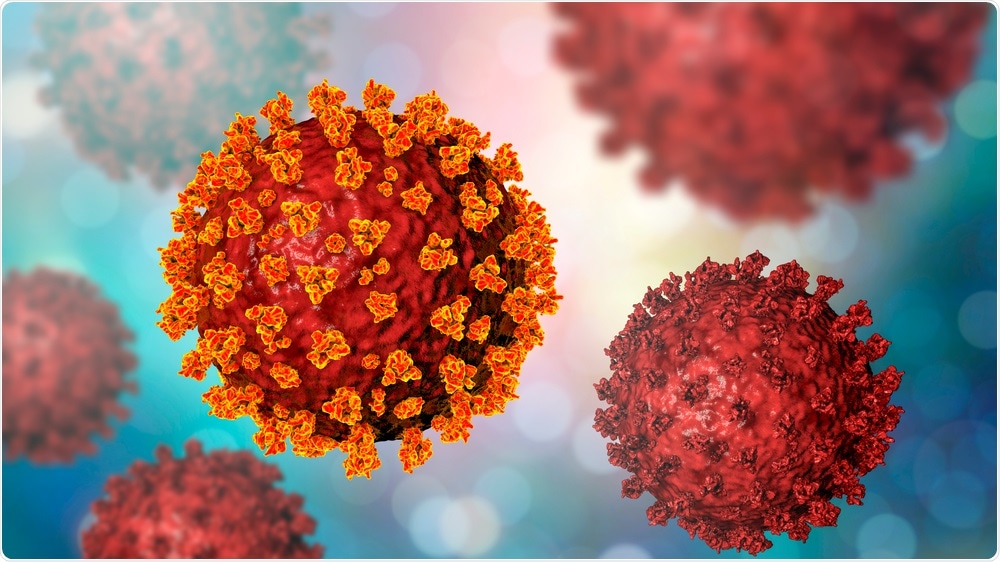SARS-CoV-2 is usually tracked by two types of tests, reverse transcriptase PCR (rt-PCR) and antibody tests. The rt-PCR test is used for present ongoing infection, while antibody tests disclose that an infection has occurred, much before this fact is known.

Image Credit: Kateryna Kon/Shutterstock.com
Two papers published in the Journal of Clinical Microbiology deal with one of these testing modalities. One paper, dedicated to antibody testing and penned by Elitza S. Theel Ph.D., and collaborators from the Department of Clinical Microbiology the Mayo Clinic, Rochester Minnesota, discovered that two tests meant for SARS-CoV-2 antibodies are highly precise.
The other paper, relating to the use of rt-PCR to test the present infection and penned by Daniel A. Green, MD, of Columbia University Irving Medical Center, New York, NY, and collaborators, discovered that a repeat test is indicated when people test negative for the presence of COVID-19 RNA, in spite of either a “high clinical suspicion” of infection or a chance that the patient has been exposed to the virus.
The Journal of Clinical Microbiology is published by the American Society for Microbiology.
To determine whether an individual is presently infected, rt-PCR is used to determine the presence of specific RNA sequences from the genome of the virus. The rt-PCR is considered the gold standard for such protocols.
Nevertheless, residues comprising applicable sequences may occasionally remain in the body even after the disappearance of an infection, resulting in a false positive.
In the analysis, Dr. Green and his colleagues carried out as many as 27,377 tests in 22,338 patients. They conducted repeat testing for a total of 3,432 patients, of whom 2,413 had tested negative initially, while 802 had tested positive.
Among the repeats in individuals who had tested positive, the researchers found that transition to a negative result was not likely to occur before 15 to 20 days after initial testing, or before 20 to 30 days after the onset of symptoms.
Among those who initially tested negative, in spite of having been exposed to the virus or already having symptoms, for a total of 20 days, one-quarter of these individuals tested positive upon repeat testing.
The move from testing negative to testing positive may be attributed to viral shedding, which increases over a period of time and ultimately exceeds a detection threshold.
In addition, considerable numbers of patient samples are not properly collected, which led to inaccurate results, and repeat testing raises the possibility of a precise result. Finally, a few patients who initially tested negative are truly negative and got the infection in the hospital post-admission.
For patients who showed an initial positive result, the researchers recommend waiting for at least 15 days before performing a repeat test. The researchers, however, warned that in the case of a positive repeat, “whether repeat positivity represents active infection or more likely detection of nonviable viral RNA is unknown [and] further studies are needed to develop predictive models of the course and outcome of COVID-19.”
Antibody testing can help determine the percentage of a population that has been affected, the geographic spread of the virus, and the onset of herd immunity. Probably, it will also be handy for identifying potential donors of convalescent plasma, antibodies that can be injected to patients with severe cases of COVID-19 to help them combat the virus, and for determining the efficacy of candidate vaccines.
Dr. Theel and her colleagues tested the precision of four test kits to identify both individuals who are not infected (specificity) and those who are infected (sensitivity).
Two of the tests conducted by Abbott Laboratories (Anbott Park, IL) and Ortho-Clinical Diagnostics (Rochester, New York), out of three that excelled in sensitivity, also demonstrated an accuracy of 99% for specificity. The third test conducted by Euroimmun (Lubeck in Germany) excelled for sensitivity and not for specificity.
With the unprecedented influx of commercially available test kits for the detection of antibodies against SARS-CoV-2, it remains imperative that laboratories thoroughly evaluate these assays for accuracy prior to implementation.”
Researchers, American Society for Microbiology
Source:
Journal reference:
Theel, E. S., et al. (2020) Performance Characteristics of Four High-Throughput Immunoassays for Detection of IgG Antibodies against SARS-CoV-2. Journal of Clinical Microbiology. doi.org/10.1128/JCM.01243-20.